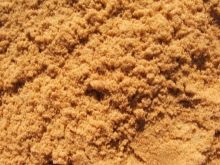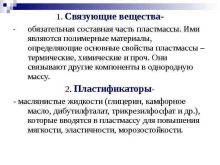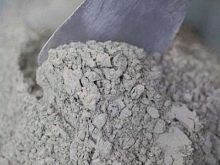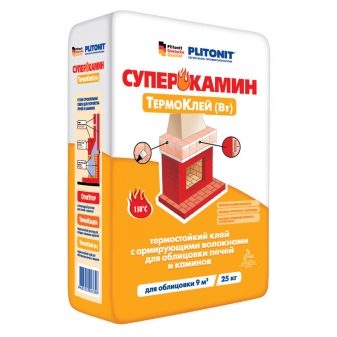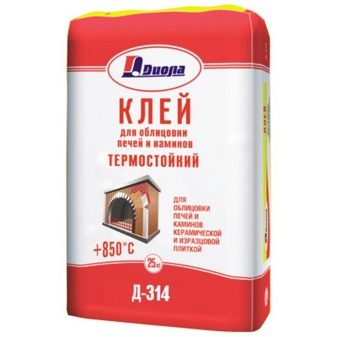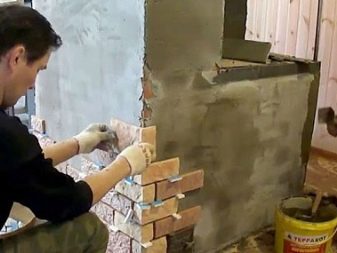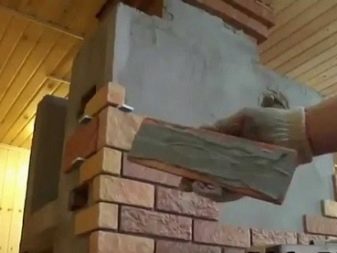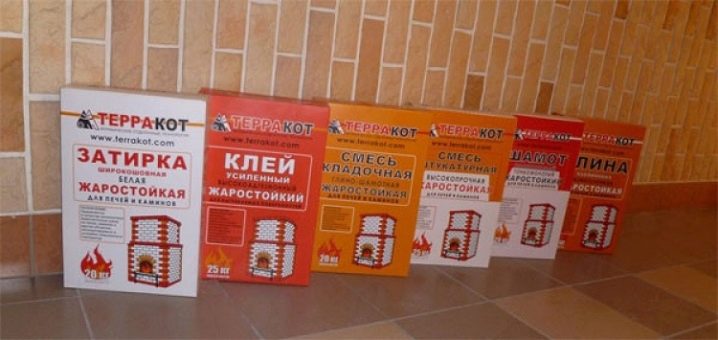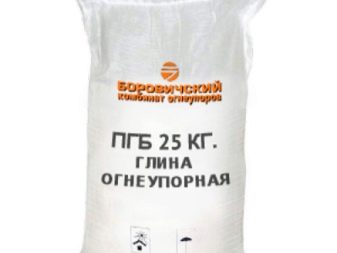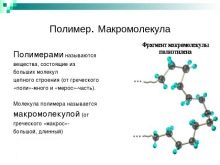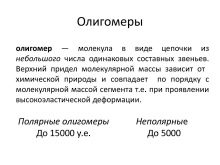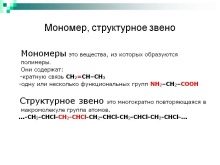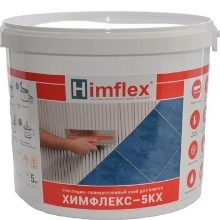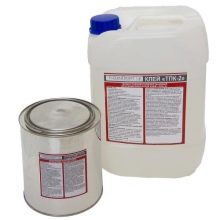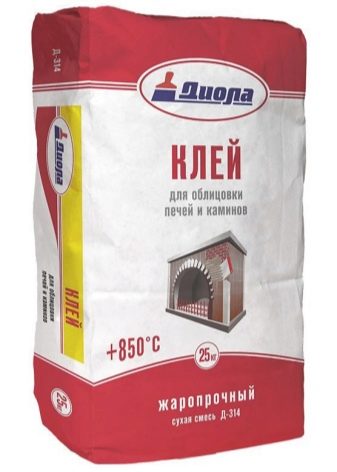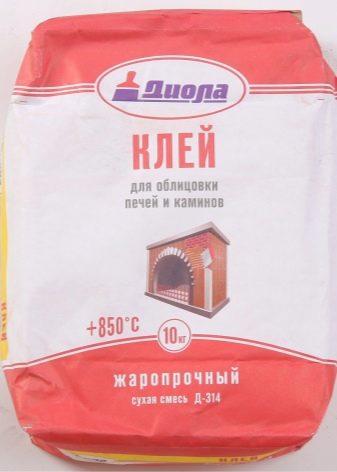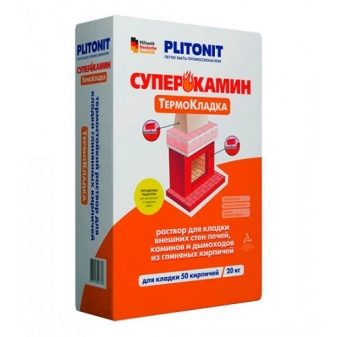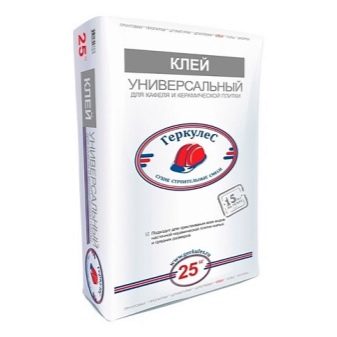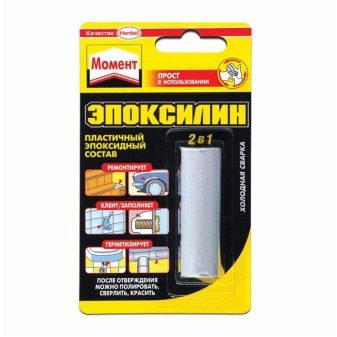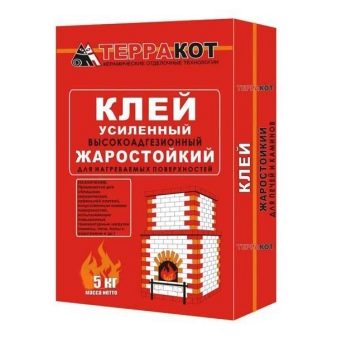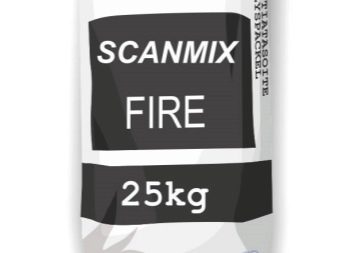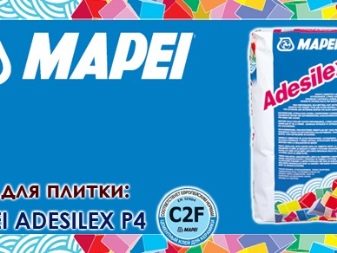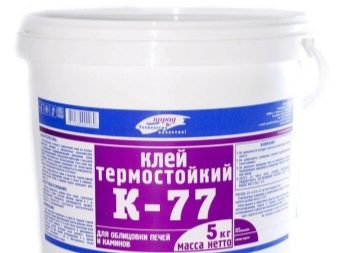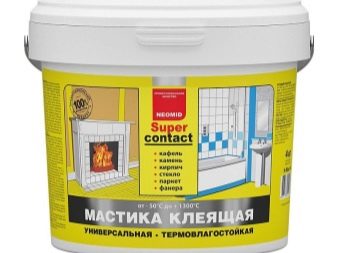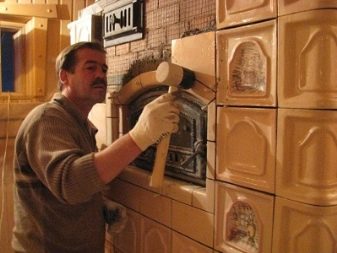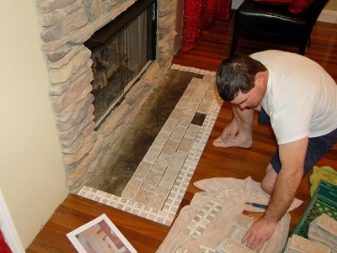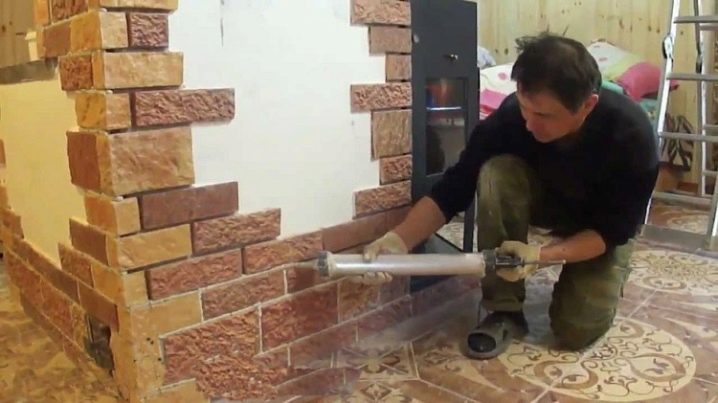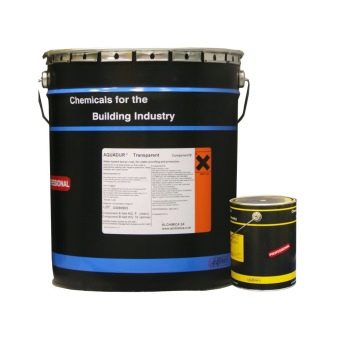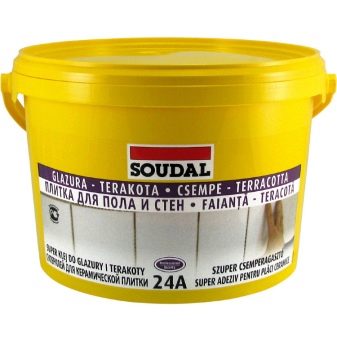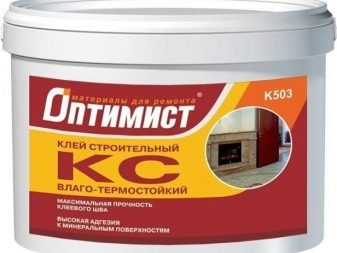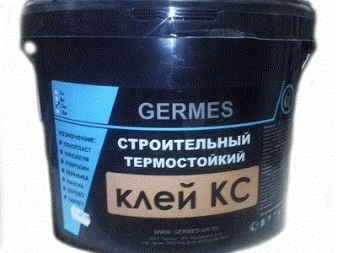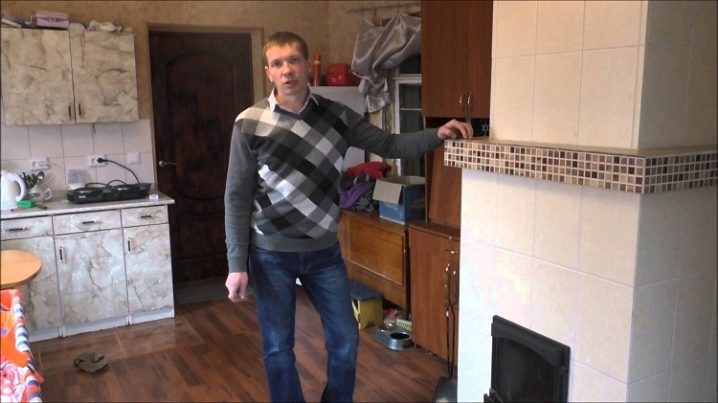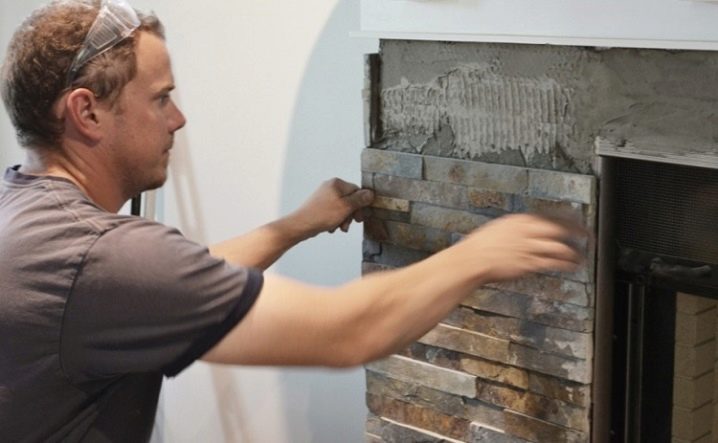Heat-resistant glue: types and characteristics of the composition
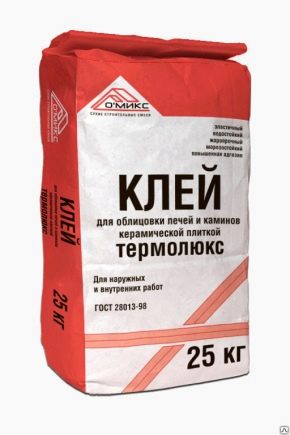
Materials that are subjected to periodic influences of low and high temperature, dictate increased requirements for adhesives. For the stove, fireplace, heated floor and ceramic tiles, high-quality and reliable heat-resistant glue is required. The strength of any material can provide just such an adhesive. It is used in the form of a paste or dry mix. To obtain the necessary consistency, you need to add a certain amount of pure water, depending on the recommendations indicated on the etiquette.
Special features
Today, components of heat-resistant glue are several elements each of them has special properties:
- sand and cement;
- a mixture of plasticizers (provides the highest elasticity and does not allow the destruction of the connecting layers);
- synthetic additive (improves the thermal properties of the adhesive).
Often, the manufacturer can add refractory clay in the composition of heat-resistant glue. This is done in order to provide a strong connection of substances and to increase the stability of the spike site to sudden temperature fluctuations.
High-quality heat-resistant adhesive, which will be used in the future, should be characterized by some properties:
- linear expansion;
- resistance to wear and moisture;
- temperature minimum of stability - not less than three hundred degrees;
- resistance to high and low temperature simultaneously;
- harmless to the environment;
- the composition must be universal, suitable for both internal and external works;
- Ability to good heat transfer.
When using high-temperature glue in order to connect plastic surfaces, it is recommended to use heat-resistant plastic. In other words, the characteristics of the materials must match.
Heat-resistant tile adhesive composition is desirable to use for cladding, for example, furnaces.
Species
When choosing a heat-resistant adhesive, it is necessary to consider the area of its use. If one composition is most effective for cladding a fireplace, stove, facade of a residential building, the other is suitable for natural stones and glass, the third - for gluing metal elements. And when gluing kitchenware, it is more practical to use a special non-toxic heat-resistant adhesive.
Separate categories of heat-resistant glue have their own distinctive components that determine the area of its use. In general, heat-resistant glue is divided into two main categories: natural and synthetic mixture. The category of glue is indicated on the label.
- Natural blend. As part of this adhesive, the main ingredient is sodium metasilicate as an aqueous solution of liquid glass. When mixed with sand, refractory clay fibers and minerals, an adhesive is obtained.
He is able to withstand temperature jumps up to a thousand degrees.
This environmentally friendly mixture when heated does not emit harmful, toxic substances.This composition is often used in home repairs. For example, if you need to fix the seal in the oven.
- Synthetic blend. Polymers, oligomers, monomers and their combinations are taken as the basis for manufacturing. Inorganic substances are used to create the most heat-resistant glue. Phosphate adhesive material can withstand a temperature of 1-2 thousand degrees. Other species can withstand even greater temperatures - up to 3 thousand degrees.
Such compositions are resistant to acid and moisture. Often used for bonding graphite and various metals.
The heat-resistant dielectric adhesive is divided by its composition into a dry and pasty mixture.
Each of them has certain characteristics that will help you determine the right product.
- Single-component composition for bonding ceramic tiles. The basis is an acrylic blend in which resin and various modifiers are added. It has a high adhesion rate, you can adjust the position of the tile within twenty minutes.
- Two-component aluminosilicate rubber adhesive composition.Made on the basis of two ingredients - polyurethane and epoxy resin. When using them you must mix well. This glue is known as fast-hardening, the time for adjustment is insignificant.
- Dry mixes. Cement with enhanced elasticity and adhesion characteristics is taken as the basis for manufacturing. The polymer modifier in the adhesive mixture does not allow the formation of cracks at high temperature surges and compaction of binders.
Each manufacturer on the labels specified temperature minimum, which can withstand a transparent, waterproof and any other adhesive composition. Also, the maximum allowed operating temperature is indicated.
Manufacturers
To date, the range of heat-resistant compositions is striking in its diversity. Each manufacturer tries to make a better, more versatile option than those that are already on the shelves. In order not to be mistaken with the choice in all this abundance of brands, it is necessary to have an idea of the most popular adhesive products.
- "D-314" - this is an adhesive composition, which is produced by our domestic company "Diola". It is mainly used for finishing work with stoves and ceramic tiles on fireplaces. The fabricated composition is elastic and shape-resistant, in connection with which the tiles do not slip and stick tightly on the lined surfaces.
- "Super fireplace" - this is a bonding compound with reinforcing fiber from domestic manufacturer Plitonit. Reliably sticks together structures made of concrete and bricks, which are subject to heating, ceramic tiles, granite and other natural materials.
- "Hercules" - adhesive, designed to build a fireplace or stove that can take out the heating of the surface to a thousand degrees. Perfectly copes with the work of finishing coatings that are constantly exposed to heat: low-porcelain ceramic tiles and glazed tiles. The structure gives the chance to carry out finishing works at a temperature from-10 to +35 degrees.
- "Moment Epoxylin" - very resistant and durable adhesive composition, which is produced by the world famous company Henkel. The epoxy resin is taken as a basis, the glue is a two-component mixture. It is recommended to use it for bonding metals, ceramic and glass surfaces.After the glue hardens, a durable layer is formed, so that you can safely do polishing or drill the necessary holes.
- Terracotte adhesive mixture - ideal option for use in facing works.
It has enhanced adhesive characteristics.
- Finnish heat-resistant adhesive "Scanmix Fi" used for the construction of solid fuel or stove designs.
- Epoxy adhesive mixture Adesilex from the Indonesian manufacturer perfectly cope with the combination of different composition of materials.
- Fireproof adhesive mixture "Parade 77" maintains heating of a surface to eight hundred degrees. Not recommended for the plastered surface of the stove or fireplace design.
- Pasty adhesive base "Neomid"with universal characteristics, applicable to the fireplace, stove, tile and more. Such characteristics has the composition "Pechnik."
How to choose?
The choice of the necessary option depends on what materials you plan to glue.In addition, the choice of location and operation of the bonded materials. A good quality adhesive can withstand temperatures of one hundred and twenty degrees and above
The condition of the material also plays a significant role.
- Heat resistant glue for stove. First you need to determine the location of the future furnace. It can be located both inside the dwelling and outside. If the building is on the street, then it will face sharp temperature changes. In the afternoon - warm sunny weather, and at night - subzero temperature.
Subsequently, this can lead to flaking of the tile, so carefully review the label on the adhesive. The manufacturer is obliged to indicate the endurance of the composition to such temperature changes. Take a closer look at the products, based on talkohlorite and liquid glass - both substances have high thermal conductivity and elasticity. To get rid of the cracks will help heat-resistant silicate or heat-resistant two-component silicone sealant.
- The best option for gluing aluminum and other metals is a two-component polyurethane-epoxy adhesive.It contains chemical components that ensure reliable fastening. It should be noted that the two-component adhesive composition is mixed with a hardener before use, in a one-to-one ratio. Often the proportions may vary, depending on the goal.
- Bathroom, bath or sauna are the most moisture-prone rooms, so when choosing an adhesive, you need to remember this. Before buying, consider what basis the ceramic tile will be stuck to (plaster, old tile, drywall), tile type and its properties to moisture absorption (this affects glue absorption), tile size (the larger the tile parameters, the thicker the glue layer will be required ), surface area, etc.
Further, it all depends on your preferences and characteristics of the room in which the facing work will be carried out. For example, in bathrooms it is recommended to choose a dry composition, which is based on cement. In ready-made adhesives there is one important nuance: they have a higher price than dry analogues. It is necessary to apply ready mixes on ideally smooth surfaces.Nevertheless, many still prefer to buy a dry mix, it is more affordable and optimal in its characteristics.
Application tips
- First of all, it is recommended to prepare the surface to be glued. It must be durable, even, cleaned from lime, oil, fatty substances, dust and dirt, as they can reduce the adhesion of the glue. When gluing to the base, which is highly absorbent, it is necessary to pre-process it using a priming emulsion. Leave it to dry completely for several hours.
In case of a weakly absorbing base, it is also recommended to treat it with a specially intended compound. Prepare the surface a couple of days before facing.
- During the work with dry mixes it is required to prepare a surface and to wait about an hour. Glue is diluted with clean water in a ratio of about a quarter liter per kilogram of dry mix. When mixing, it is best to use a drill or a special mixer to avoid the appearance of clots and lumps.
- The algorithm for working with glue is as follows: using a spatula, the composition is applied to the desired surface, smoothed around the perimeter.Next, the tile is pressed (it is amenable to correction within about fifteen minutes after gluing). It is important to remember that the thickness of the applied mixture should not exceed more than one centimeter.
Grouting occurs after installation, after two days.
Glue with thermal properties has long occupied one of the leading positions among adhesive mixtures. It can be used, for example, for ceramics, strong cast iron, glass ceramics and rubber. He has proven himself in everyday life. For example, according to the instructions for use, it can be used to process different parts of the oven. Due to the ability to maintain strength, durability, plasticity and high adhesion, regardless of temperature fluctuations, this material has really become indispensable for construction and repair work.
How tightly glue together various materials, you can learn from the video below.

